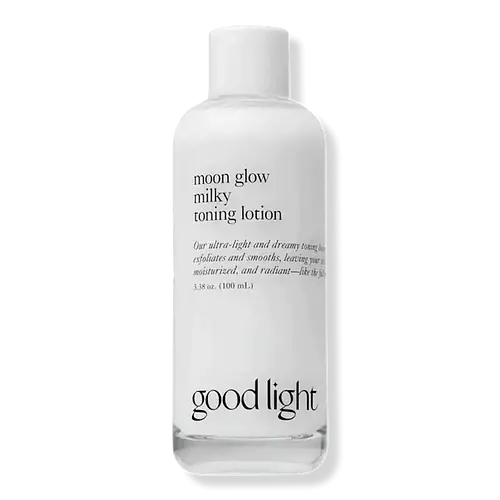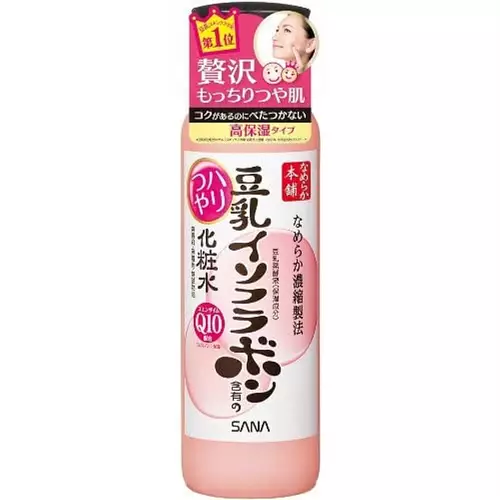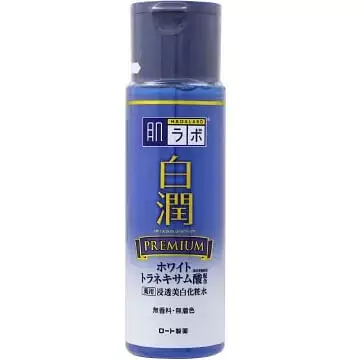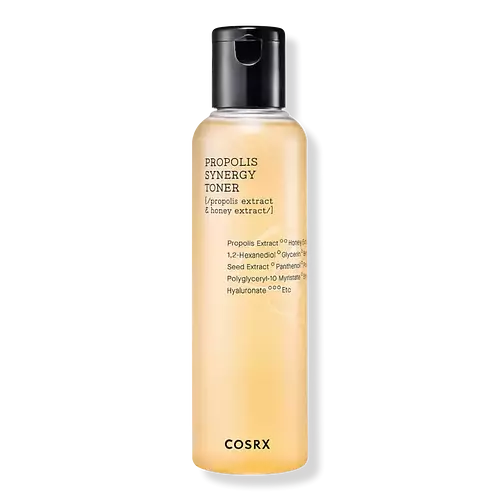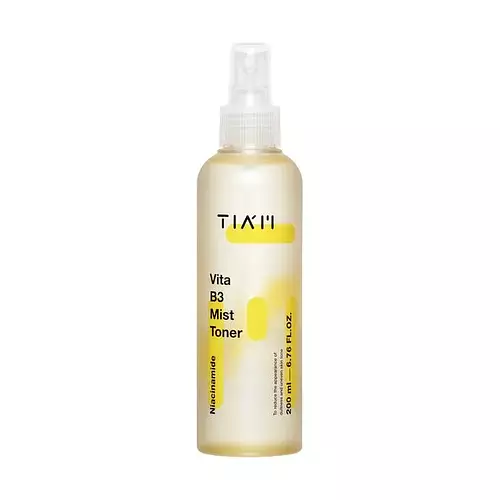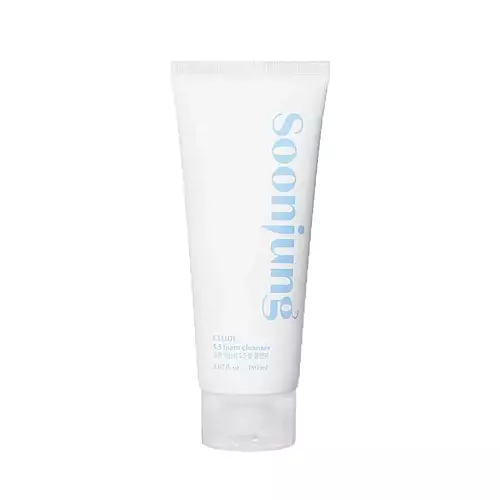Updated on June 01, 2024
Overview
What they are
These products are both toners. They have a total of 6 ingredients in common
Suited For
They're both likely to be good for anti aging, dry skin, brightening skin, sensitive skin and dark spots
Free From
They both do not contain any harsh alcohols, common allergens, silicones or sulfates
What's Inside
They both contain fragrances and oils
We independently verify ingredients, and our claims are backed by peer-reviewed research. Spot a product that needs an update? Let us know.
Ingredient Info
Kiku-Masamune Sake Brewing Sake Skin Care Lotion Bright Moist 23 ingredients
Acwell Licorice pH Balancing Cleansing Toner 27 ingredients
At a glance
Click on any of the items below to learn more
Kiku-Masamune Sake Brewing Sake Skin Care Lotion Bright Moist 23 ingredients
Acwell Licorice pH Balancing Cleansing Toner 27 ingredients
Benefits
This product contains 3 ingredients that may have this attribute:
This product contains 3 ingredients that may have this attribute:
This product contains 3 ingredients that may have this attribute:
This product contains 2 ingredients that may have this attribute:
This product contains 2 ingredients that may have this attribute:
This product contains 1 ingredient that may have this attribute:
This product contains 1 ingredient that may have this attribute:
Concerns
This product contains 1 ingredient that may have this attribute:
This product contains 2 ingredients that may have this attribute:
Notable Ingredients
This product contains 1 ingredient that may have this attribute:
Benefits
This product contains 1 ingredient that may have this attribute:
This product contains 1 ingredient that may have this attribute:
This product contains 1 ingredient that may have this attribute:
This product contains 1 ingredient that may have this attribute:
This product contains 1 ingredient that may have this attribute:
This product contains 1 ingredient that may have this attribute:
This product contains 1 ingredient that may have this attribute:
This product contains 2 ingredients that may have this attribute:
Concerns
This product contains 1 ingredient that may have this attribute:
This product contains 1 ingredient that may have this attribute:
Ingredients Side-by-side
Ingredients Explained
These ingredients are found in both products.
Ingredients higher up in an ingredient list are typically present in a larger amount.
Water. It's the most common cosmetic ingredient of all. You'll usually see it at the top of ingredient lists, meaning that it makes up the largest part of the product.
So why is it so popular? Water most often acts as a solvent - this means that it helps dissolve other ingredients into the formulation.
You'll also recognize water as that liquid we all need to stay alive. If you see this, drink a glass of water. Stay hydrated!
Learn more about WaterGlycerin is already naturally found in your skin. It helps moisturize and protect your skin.
A study from 2016 found glycerin to be more effective as a humectant than AHAs and hyaluronic acid.
As a humectant, it helps the skin stay hydrated by pulling moisture to your skin. The low molecular weight of glycerin allows it to pull moisture into the deeper layers of your skin.
Hydrated skin improves your skin barrier; Your skin barrier helps protect against irritants and bacteria.
Glycerin has also been found to have antimicrobial and antiviral properties. Due to these properties, glycerin is often used in wound and burn treatments.
In cosmetics, glycerin is usually derived from plants such as soybean or palm. However, it can also be sourced from animals, such as tallow or animal fat.
This ingredient is organic, colorless, odorless, and non-toxic.
Glycerin is the name for this ingredient in American English. British English uses Glycerol/Glycerine.
Learn more about GlycerinButylene Glycol (or BG) is used within cosmetic products for a few different reasons:
- It is a solvent, meaning that it helps to dissolve other ingredients. This also enhances the absorption of the product into one's skin.
- It is a humectant, which means that it helps attract moisture into the skin.
- It helps improve product application.
Overall, Butylene Glycol is a safe and well-rounded ingredient. It is unlikely to irritate skin, and works well with pretty much all other ingredients.
Sodium Citrate is the sodium salts of citric acid. In skincare, it is used to alter pH levels and acts as a preservative.
Sodium Citrate helps maintain the pH of a product. Normal pH level of skin is slightly acidic (~4.75-5.5). The acidity of our skin is maintained by our glands and skin biome. Being slightly acidic allows our skin to create an "acid mantle". This acid mantle is a thin barrier that protects our skin from bacteria and contaminants.
Sodium Citrate is a chelating agent. It neutralizes metal ions from water and prevents them from binding to other ingredients. This ensures the other ingredients will not be altered.
Learn more about Sodium CitrateCitric Acid is an AHA derived from citrus fruits (think oranges, lemons, and limes!).
As an AHA, Citric Acid removes the top layer of skin cells from the newer layer of skin underneath. This helps skin to remove dark spots and even out skin tone.
If you spot Citric Acid near the end of an ingredient list, it's likely there as a pH adjuster rather than an active ingredient.
Read more about some other popular AHA's here:
Learn more about Citric AcidPhenoxyethanol is a preservative that has germicide, antimicrobial, and aromatic properties. Studies show that phenoxyethanol can prevent microbial growth. By itself, it has a scent that is similar to that of a rose.
It's often used in formulations along with Caprylyl Glycol to preserve the shelf life of products.
Ingredient Ratings
Here's what our community thinks of the ingredients in these two products.
When to use
Kiku-Masamune Sake Brewing Sake Skin Care Lotion Bright Moist 23 ingredients
Acwell Licorice pH Balancing Cleansing Toner 27 ingredients


Reviews
Here's what our community thinks
Kiku-Masamune Sake Brewing Sake Skin Care Lotion Bright Moist 23 ingredients
Brandi Sarama
I heard some reviews that this product might be better than the Naturie Hatomugi Skin Conditioner, and had better brightening effects, however...
I heard some reviews that this product might be better than the Naturie Hatomugi Skin Conditioner, and had better brightening effects, however personally I think I have fairly sensitive skin and the ferment ingredient in this product was too strong and caused me to get closed comedones almost immediately which resulted in a cystic acne breakout for me. I did notice better brightening effects in various areas of my face but unfortunately this product just didn't work for me.
Acwell Licorice pH Balancing Cleansing Toner 27 ingredients
traceyy
Loved the smell and consistency, but I hated the design of the bottle. The lid made it hard to work with due to the consistency of the toner. My...
Loved the smell and consistency, but I hated the design of the bottle. The lid made it hard to work with due to the consistency of the toner. My skin looked brighter after consistent use, but I ultimately decided not to repurchase due to the lid.






